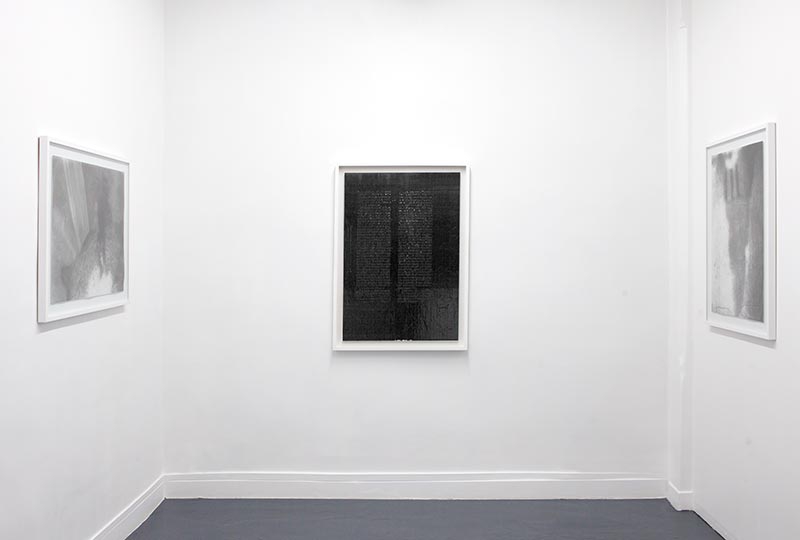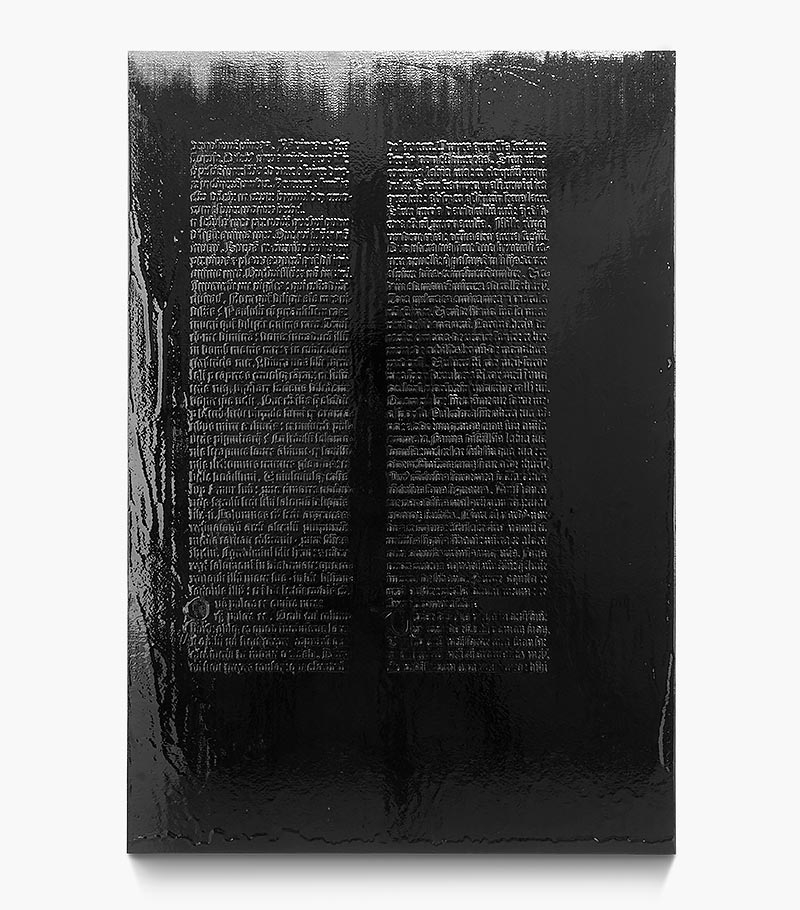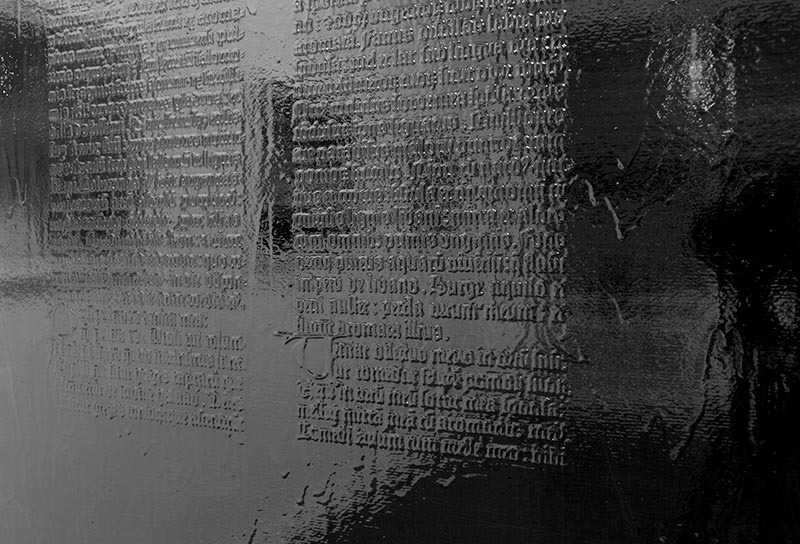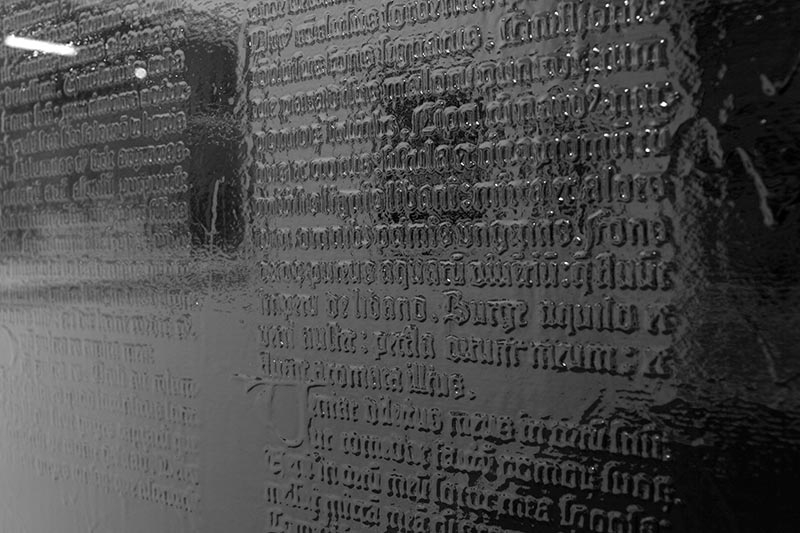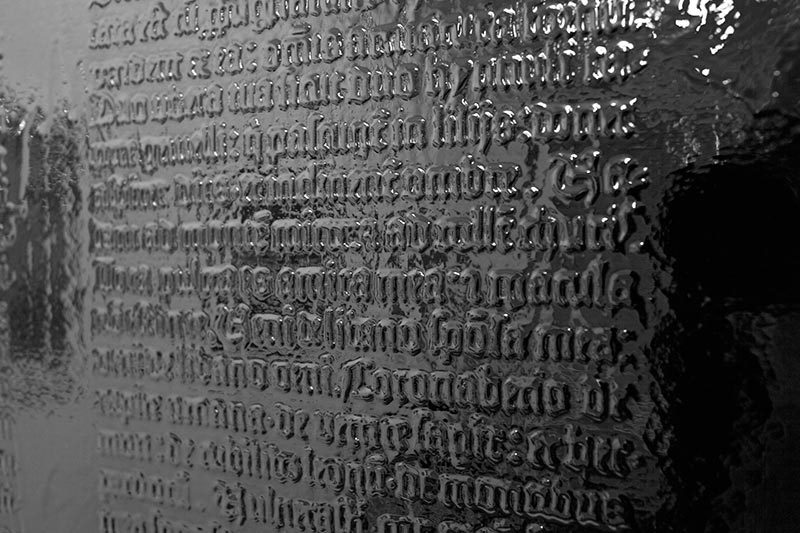Most necessary for man’s life are water, fire, iron and salt, wheaten flour, milk, honey, the juice of the grape, oil and clothing.
Old Testament, Book of Ben Sirach, 39, 26
-
Mel et lac sub lingua tua
Milk and honey are under your tongue
Old Testament, Song of songs IV.11
-
I found the bees’ nest in the buffalo’s chest
I drank their honey, that milk (…)
And this kidnaps me
Bill Callahan,
Universal Applicant
-
Just leave all your melancholy
and your clothes at the door
I will serve milk and honey
have you drinking through a straw
Murder, Milk & Honey
-
The Bees' Nest is a proportional enlargement on a wood panel of a page of the Gutenberg Bible. The components of the work allude to a historical printing workshop from the Gutenberg era: letters are carved in relief, and a tar coating evokes the texture of typographic ink.
The selected excerpt is taken from the fourth part of the
Song of Songs, where milk and honey are used as metaphors of wealth. In a contemporary echo of this, tar offers a new version of opulence. A great preservative of physical objects, here it symbolically conserves an antique expression of desire formulated more than a thousand years ago —and still relevant today.
 Laser engraving on MDF, tar
Laser engraving on MDF, tar
70 x 100 cm

see also
The Ecclesiastes

The Bees’ Nest est un agrandissement sur panneau de bois d’une page de la Bible de Gutenberg. Les éléments constitutifs de l’œuvre évoquent un atelier d’imprimeur de l’époque: les lettres sont gravées en relief, tandis que le bitume qui recouvre la plaque évoque par sa texture l’encre typographique.

La passage choisi est tiré de la quatrième partie du Cantique des cantiques, où il est fait mention du lait et du miel comme métaphore de la richesse. En écho, le bitume peut incarner aujourd’hui une nouvelle version de l’opulence. Excellent conservateur, il permet aussi de façon symbolique de préserver une expression du désir manifestée il y plus d’un millénaire, et pourtant toujours actuelle.

Gravure laser sur MDF, bitume
70 x 100 cm

voir L'Ecclésiaste

